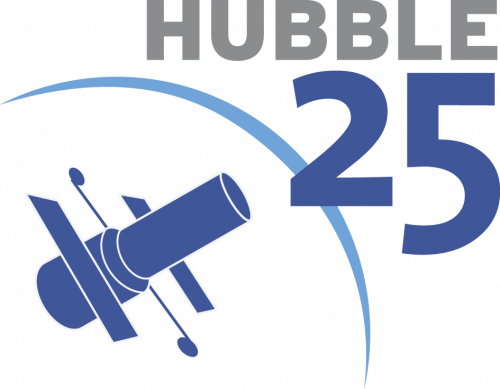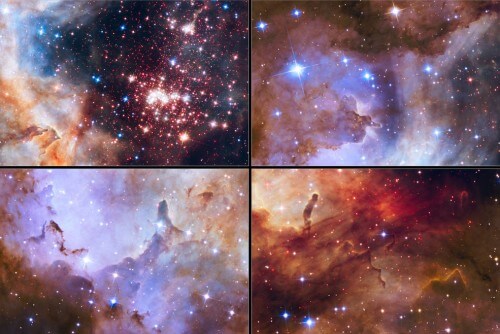His first task was to measure the expansion rate of the universe. He discovered quite pale distant galaxies and studied black holes. Hubble's research covered almost every front in space astronomy: the expansion and acceleration of the universe, the relationship between the mass of a galaxy and the mass of the black hole at its center, and more

By Paul Gautreau, Goddard Space Flight Center.
A new window opened to the universe on the morning of April 24, 1990, when the Hubble Space Telescope was launched into space, riding atop the Promethean flare of the Space Shuttle Discovery.
Even the most optimists in 1990 could not have predicted the power with which Hubble would rewrite the textbooks in astrophysics and planetary sciences" says Charlie Bolden, NASA administrator and astronaut on the mission that put Hubble into orbit. "A quarter of a century later, grief has fundamentally changed humanity's understanding of the universe and our place within it." said.
The scientific value of mourning is enormous. He showed us the universe as we had never imagined. Hubble changed the course of science through its observations and showed us the depth and beauty of space," says John Grunsfeld, who was also an astronaut on the flight that launched Hubble, and is currently an assistant to NASA's director of scientific missions at NASA headquarters in Washington. "Through the new observations and uncovering hidden treasures in the Hubble data archive, we can continue to uncover the mysteries of the cosmos for many years to come."
Above the glare and blur of Earth's atmosphere, Hubble provides a view "over the rainbow" of the universe, from ultraviolet, visible light to near infrared light. The fantastic images of the mourning reveal both the beauty and the violent events in a depth that is hard to imagine in the dome of heaven. Combined with the power of the large telescopes, Chandra, Spitzer and the now defunct Compton Gamma Ray Observatory, Hubble colored the solar system and beyond and changed astronomy forever.
His first task was to measure the expansion rate of the universe. He discovered quite pale distant galaxies and studied black holes. Hubble's research covered almost every front in deep space astronomy: the expansion and acceleration of the universe, the relationship between the mass of a galaxy and the mass of the black hole at its center, the fact that the first galaxies formed shortly after the Big Bang, strange changing events in space, and the chemistry and possibility of life on planets orbiting other suns.
Hubble's long exposures of the distant universe revealed an "unknown land" of "jarring" objects, violent explosions and galaxy collisions. They tell the story of the dynamic evolution of the universe since the Big Bang.
Hubble also provided an unprecedented look at the dynamics of the Solar System, studying colliding asteroids, auroras and changing weather on planets and moons, and even enabled the discovery of previously unknown moons.

Beyond being a tool for the astronomers, the Hubble is also a telescope for the general public. It is one of the most influential scientific instruments ever built that has refreshed and reshaped the world's perception of outer space. His images and discoveries captured the imagination of people all over the world and touched everything from popular culture to science fiction, from the art academy. Hubble also significantly improved the demand for STEM (Science, Technology, Engineering and Mathematics) studies in the US. His study materials are used by half a million teachers and six million students a year in the US alone.
Thanks to five shuttle missions, involving 32 astronauts who performed spacewalks, and a huge number of scientists, engineers and crew members working on Hubble, the telescope would have ended its life as originally planned in 2005. The scientific observation capabilities today are stronger than they were when it was launched, with upgraded instruments, computers and control systems that demonstrate excellent performance, it will be able to operate at least until the end of the decade.
With the support of the European Space Agency, Hubble has pioneered the planning of mankind's next step into the universe. The James Webb Space Telescope, a NASA partnership with the European and Canadian space agencies is scheduled for launch in 2018. It will be able to see much farther and therefore backward in time compared to Hubble through its upgraded infrared observation capabilities.
James Webb will reveal galaxies as they appeared in the first 200 million years after the Big Bang. It will also be able to dig deeper into the disks from which planets orbit young stars, which Hubble has often seen as silhouettes, and push forward our knowledge of planets outside the solar system.

3 תגובות
Yes
Amit
The middle of the solar system is the sun... But I understand that's not what you meant. Your idea has been in use for several years. For example, the "Herschel" telescope was located about one and a half million kilometers from us, in the opposite direction to the sun. That is - at midnight it is right above us. The special thing about this point is that the point is stable and the telescope is always on the line that goes from the sun through the earth. This is how the telescope is in the shadow of the sun (not completely because at this distance the sun appears slightly larger than the earth - hence there is no "permanent solar eclipse". This point has a special name L2, named after a mathematician named Lagrange.
Question - doesn't it make more sense to send such a telescope to the middle of the solar system? When it revolves around the Earth, there are many factors that interfere with it - the Moon, the Earth, other satellites of all kinds...
If launched millions of kilometers from here it will be free in any direction at any given time. (Don't say maintenance, they will build a telescope for 10 years and that's it).